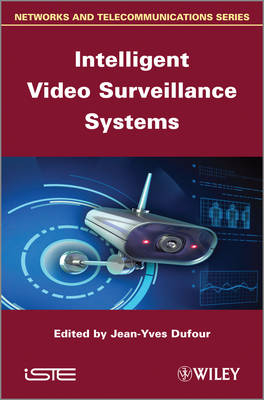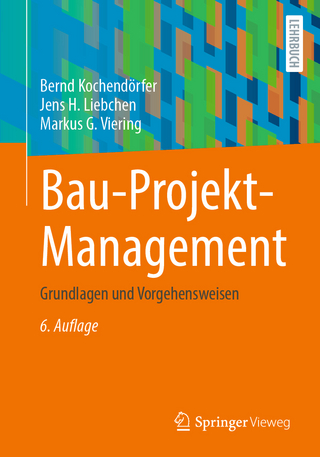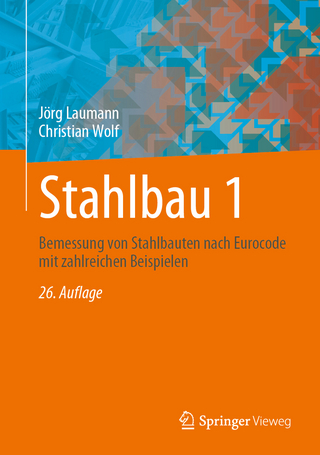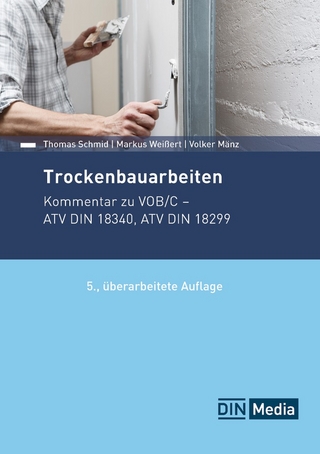
Intelligent Video Surveillance Systems
ISTE Ltd and John Wiley & Sons Inc (Verlag)
978-1-84821-433-0 (ISBN)
The aims of this book are to highlight the operational attempts of video analytics, to identify possible driving forces behind potential evolutions in years to come, and above all to present the state of the art and the technological hurdles which have yet to be overcome. The need for video surveillance is introduced through two major applications (the security of rail transportation systems and a posteriori investigation). The characteristics of the videos considered are presented through the cameras which enable capture and the compression methods which allow us to transport and store them. Technical topics are then discussed – the analysis of objects of interest (detection, tracking and recognition), “high-level” video analysis, which aims to give a semantic interpretation of the observed scene (events, behaviors, types of content). The book concludes with the problem of performance evaluation.
Jean-Yves Dufour is Head of the "Vision Lab", Thales/CEA common research laboratory, Palaiseau, France.
Introduction xiii
Jean-Yves DUFOUR and Phlippe MOUTTOU
Chapter 1. Image Processing: Overview and Perspectives 1
Henri MAÎTRE
1.1. Half a century ago 1
1.2. The use of images 3
1.3. Strengths and weaknesses of image processing 4
1.3.1. What are these theoretical problems that image processing has been unable to overcome? 5
1.3.2. What are the problems that image processing has overcome? 5
1.4. What is left for the future? 6
1.5. Bibliography 9
Chapter 2. Focus on Railway Transport 13
Sébastien AMBELLOUIS and Jean-Luc BRUYELLE
2.1. Introduction. 13
2.2. Surveillance of railway infrastructures 15
2.2.1. Needs analysis 15
2.2.2. Which architectures? 16
2.2.3. Detection and analysis of complex events 17
2.2.4. Surveillance of outside infrastructures 20
2.3. Onboard surveillance 21
2.3.1. Surveillance of buses 22
2.3.2. Applications to railway transport 23
2.4. Conclusion 28
2.5. Bibliography 30
Chapter 3. A Posteriori Analysis for Investigative Purposes 33
Denis MARRAUD, Benjamin CÉPAS, Jean-François SULZER, Christianne MULAT and Florence SÈDES
3.1. Introduction 33
3.2. Requirements in tools for assisted investigation 34
3.2.1. Prevention and security 34
3.2.2. Information gathering 35
3.2.3. Inquiry 36
3.3. Collection and storage of data 36
3.3.1. Requirements in terms of standardization 37
3.3.2. Attempts at standardization (AFNOR and ISO) 37
3.4. Exploitation of the data 39
3.4.1. Content-based indexing 39
3.4.2. Assisted investigation tools 43
3.5. Conclusion 44
3.6. Bibliography 45
Chapter 4. Video Surveillance Cameras 47
Cédric LE BARZ and Thierry LAMARQUE
4.1. Introduction 47
4.2. Constraints 48
4.2.1. Financial constraints 48
4.2.2. Environmental constraints 49
4.3. Nature of the information captured 49
4.3.1. Spectral bands 50
4.3.2. 3D or “2D + Z” imaging 51
4.4. Video formats 53
4.5. Technologies 55
4.6. Interfaces: from analog to IP 57
4.6.1. From analog to digital 57
4.6.2. The advent of IP 59
4.6.3. Standards. 60
4.7. Smart cameras 61
4.8. Conclusion 62
4.9. Bibliography 63
Chapter 5. Video Compression Formats 65
Marc LENY and Didier NICHOLSON
5.1. Introduction 65
5.2. Video formats 66
5.2.1. Analog video signals 66
5.2.2. Digital video: standard definition 67
5.2.3. High definition 68
5.2.4. The CIF group of formats 69
5.3. Principles of video compression 70
5.3.1. Spatial redundancy 70
5.3.2. Temporal redundancy 73
5.4. Compression standards 74
5.4.1. MPEG-2 74
5.4.2. MPEG-4 Part 2 75
5.4.3. MPEG-4 Part 10/H.264 AVC 77
5.4.4. MPEG-4 Part 10/H.264 SVC 79
5.4.5. Motion JPEG 2000 80
5.4.6. Summary of the formats used in video surveillance 82
5.5. Conclusion 83
5.6. Bibliography 84
Chapter 6. Compressed Domain Analysis for Fast Activity Detection 87
Marc LENY
6.1. Introduction 87
6.2. Processing methods 88
6.2.1. Use of transformed coefficients in the frequency domain 88
6.2.2. Use of motion estimation 90
6.2.3. Hybrid approaches 91
6.3. Uses of analysis of the compressed domain 93
6.3.1. General architecture 94
6.3.2. Functions for which compressed domain analysis is reliable 96
6.3.3. Limitations. 97
6.4. Conclusion 100
6.5. Acronyms 101
6.6. Bibliography 101
Chapter 7. Detection of Objects of Interest 103
Yoann DHOME, Bertrand LUVISON, Thierry CHESNAIS, Rachid BELAROUSSI, Laurent LUCAT, Mohamed CHAOUCH and Patrick SAYD
7.1. Introduction. 103
7.2. Moving object detection 104
7.2.1. Object detection using background modeling 104
7.2.2. Motion-based detection of objects of interest 107
7.3. Detection by modeling of the objects of interest 109
7.3.1. Detection by geometric modeling 109
7.3.2. Detection by visual modeling. 111
7.4. Conclusion 117
7.5. Bibliography 118
Chapter 8. Tracking of Objects of Interest in a Sequence of Images 123
Simona MAGGIO, Jean-Emmanuel HAUGEARD, Boris MEDEN, Bertrand LUVISON, Romaric AUDIGIER, Brice BURGER and Quoc Cuong PHAM
8.1. Introduction 123
8.2. Representation of objects of interest and their associated
visual features 124
8.2.1. Geometry 124
8.2.2. Characteristics of appearance 125
8.3. Geometric workspaces 127
8.4. Object-tracking algorithms 127
8.4.1. Deterministic approaches 127
8.4.2. Probabilistic approaches 128
8.5. Updating of the appearance models 132
8.6. Multi-target tracking 135
8.6.1. MHT and JPDAF 135
8.6.2. MCMC and RJMCMC sampling techniques 136
8.6.3. Interactive filters, track graph 138
8.7. Object tracking using a PTZ camera 138
8.7.1. Object tracking using a single PTZ camera only 139
8.7.2. Object tracking using a PTZ camera coupled with a static camera 139
8.8. Conclusion 141
8.9. Bibliography 142
Chapter 9. Tracking Objects of Interest Through a Camera Network 147
Catherine ACHARD, Sébastien AMBELLOUIS, Boris MEDEN,Sébastien LEFEBVRE and Dung Nghi TRUONG CONG
9.1. Introduction 147
9.2. Tracking in a network of cameras whose fields of view overlap 148
9.2.1. Introduction and applications 148
9.2.2. Calibration and synchronization of a camera network 150
9.2.3. Description of the scene by multi-camera aggregation 153
9.3. Tracking through a network of cameras with non-overlapping
fields of view 155
9.3.1. Issues and applications 155
9.3.2. Geometric and/or photometric calibration of a camera
network 156
9.3.3. Reidentification of objects of interest in a camera network 157
9.3.4. Activity recognition/event detection in a camera network 160
9.4. Conclusion 161
9.5. Bibliography 161
Chapter 10. Biometric Techniques Applied to Video Surveillance 165
Bernadette DORIZZI and Samuel VINSON
10.1. Introduction 165
10.2. The databases used for evaluation166
10.2.1. NIST-Multiple Biometrics Grand Challenge
(NIST-MBGC) 167
10.2.2. Databases of faces 167
10.3. Facial recognition 168
10.3.1. Face detection 168
10.3.2. Face recognition in biometrics 169
10.3.3. Application to video surveillance 170
10.4. Iris recognition 173
10.4.1. Methods developed for biometrics 173
10.4.2. Application to video surveillance 174
10.4.3. Systems for iris capture in videos 176
10.4.4. Summary and perspectives 177
10.5. Research projects 177
10.6. Conclusion 178
10.7. Bibliography 179
Chapter 11. Vehicle Recognition in Video Surveillance 183
Stéphane HERBIN
11.1. Introduction 183
11.2. Specificity of the context 184
11.2.1. Particular objects 184
11.2.2. Complex integrated chains 185
11.3. Vehicle modeling 185
11.3.1. Wire models 186
11.3.2. Global textured models 187
11.3.3. Structured models 188
11.4. Exploitation of object models 189
11.4.1. A conventional sequential chain with limited performance 189
11.4.2. Improving shape extraction 190
11.4.3. Inferring 3D information. 191
11.4.4. Recognition without form extraction 192
11.4.5. Toward a finer description of vehicles 193
11.5. Increasing observability 194
11.5.1. Moving observer 194
11.5.2. Multiple observers 195
11.6. Performances 196
11.7. Conclusion 196
11.8. Bibliography 197
Chapter 12. Activity Recognition 201
Bernard BOULAY and François BRÉMOND
12.1. Introduction 201
12.2. State of the art 202
12.2.1. Levels of abstraction 202
12.2.2. Modeling and recognition of activities 203
12.2.3. Overview of the state of the art 206
12.3. Ontology 206
12.3.1. Objects of interest 207
12.3.2. Scenario models 208
12.3.3. Operators 209
12.3.4. Summary 210
12.4. Suggested approach: the ScReK system 210
12.5. Illustrations 212
12.5.1. Application at an airport 213
12.5.2. Modeling the behavior of elderly people 213
12.6. Conclusion 215
12.7. Bibliography 215
Chapter 13. Unsupervised Methods for Activity Analysis and Detection of Abnormal Events 219
Rémi EMONET and Jean-Marc ODOBEZ
13.1. Introduction 219
13.2. An example of a topic model: PLSA 221
13.2.1. Introduction 221
13.2.2. The PLSA model 221
13.2.3. PLSA applied to videos 223
13.3. PLSM and temporal models 226
13.3.1. PLSM model 226
13.3.2. Motifs extracted by PLSM 228
13.4. Applications: counting, anomaly detection 230
13.4.1. Counting 230
13.4.2. Anomaly detection 230
13.4.3. Sensor selection 231
13.4.4. Prediction and statistics 233
13.5. Conclusion 233
13.6. Bibliography 233
Chapter 14. Data Mining in a Video Database 235
Luis PATINO, Hamid BENHADDA and François BRÉMOND
14.1. Introduction 235
14.2. State of the art 236
Table of Contents xi
14.3. Pre-processing of the data 237
14.4. Activity analysis and automatic classification 238
14.4.1. Unsupervised learning of zones of activity 239
14.4.2. Definition of behaviors 242
14.4.3. Relational analysis 243
14.5. Results and evaluations 245
14.6. Conclusion 248
14.7. Bibliography 249
Chapter 15. Analysis of Crowded Scenes in Video 251
Mikel RODRIGUEZ, Josef SIVIC and Ivan LAPTEV
15.1. Introduction 251
15.2. Literature review 253
15.2.1. Crowd motion modeling and segmentation 253
15.2.2. Estimating density of people in a crowded scene 254
15.2.3. Crowd event modeling and recognition 255
15.2.4. Detecting and tracking in a crowded scene 256
15.3. Data-driven crowd analysis in videos 257
15.3.1. Off-line analysis of crowd video database 258
15.3.2. Matching 258
15.3.3. Transferring learned crowd behaviors 260
15.3.4. Experiments and results 260
15.4. Density-aware person detection and tracking in crowds 262
15.4.1. Crowd model 263
15.4.2. Tracking detections 264
15.4.3. Evaluation 265
15.5. Conclusions and directions for future research 268
15.6. Acknowledgments 268
15.7. Bibliography 269
Chapter 16. Detection of Visual Context 273
Hervé LE BORGNE and Aymen SHABOU
16.1. Introduction 273
16.2. State of the art of visual context detection 275
16.2.1. Overview 275
16.2.2. Visual description 276
16.2.3. Multiclass learning 278
16.3. Fast shared boosting 279
16.4. Experiments. 281
16.4.1. Detection of boats in the Panama Canal 281
16.4.2. Detection of the visual context in video surveillance 283
16.5. Conclusion 285
16.6. Bibliography 286
Chapter 17. Example of an Operational Evaluation Platform: PPSL 289
Stéphane BRAUDEL
17.1. Introduction 289
17.2. Use of video surveillance: approach and findings 290
17.3. Current use contexts and new operational concepts 292
17.4. Requirements in smart video processing 293
17.5. Conclusion 294
Chapter 18. Qualification and Evaluation of Performances 297
Bernard BOULAY, Jean-François GOUDOU and François BRÉMOND
18.1. Introduction 297
18.2. State of the art 298
18.2.1. Applications 298
18.2.2. Process 299
18.3. An evaluation program: ETISEO 303
18.3.1. Methodology 303
18.3.2. Metrics 305
18.3.3. Summary 307
18.4. Toward a more generic evaluation 309
18.4.1. Contrast 310
18.4.2. Shadows 312
18.5. The Quasper project 312
18.6. Conclusion 313
18.7. Bibliography 314
List of Authors 315
Index 321
| Verlagsort | London |
|---|---|
| Sprache | englisch |
| Maße | 163 x 241 mm |
| Gewicht | 662 g |
| Themenwelt | Technik ► Bauwesen |
| Technik ► Elektrotechnik / Energietechnik | |
| ISBN-10 | 1-84821-433-2 / 1848214332 |
| ISBN-13 | 978-1-84821-433-0 / 9781848214330 |
| Zustand | Neuware |
| Haben Sie eine Frage zum Produkt? |
aus dem Bereich


